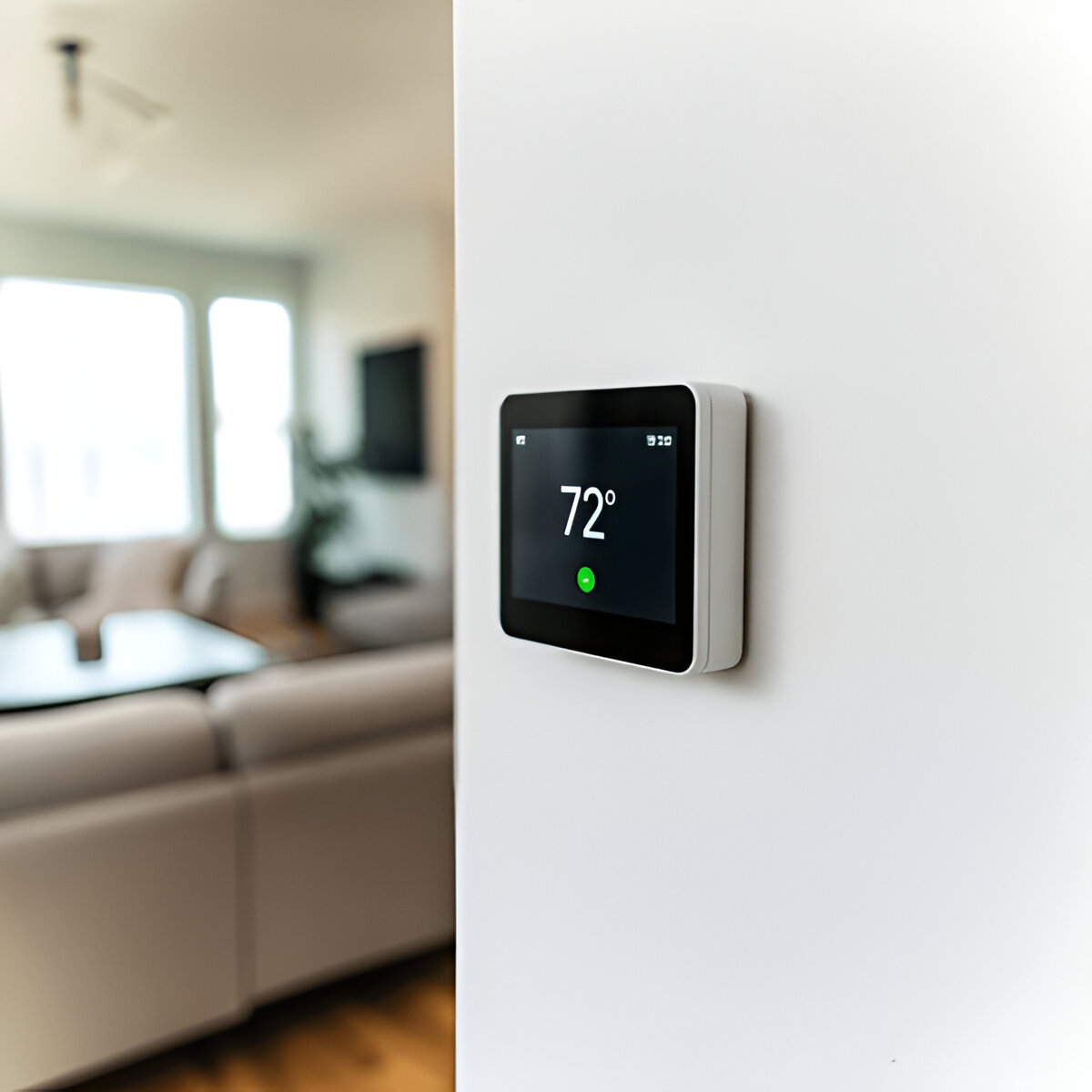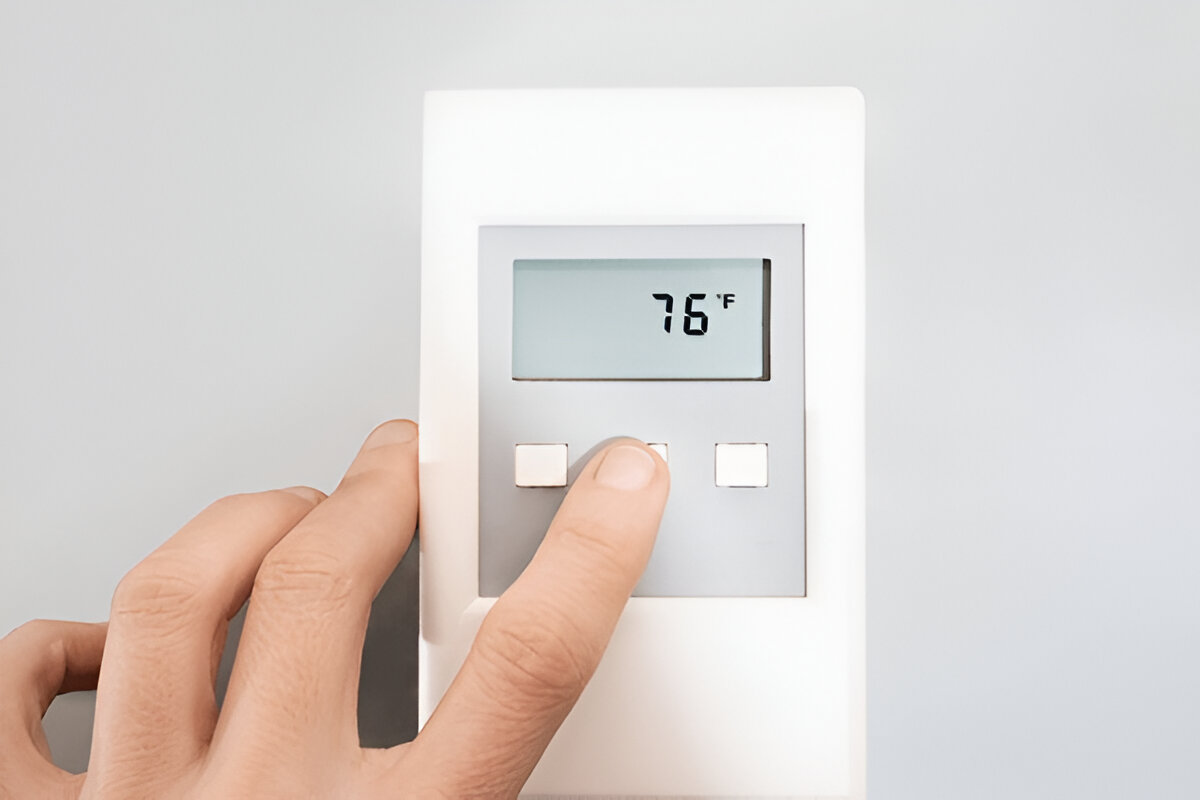
Smart thermostats have revolutionized how we control our home climate, offering convenience, energy savings, and remote access that traditional thermostats simply can’t match. These intelligent devices learn your schedule, adapt to your preferences, and can reduce your energy bills by up to 23% according to Energy Star data.
With dozens of models flooding the market, choosing the right smart thermostat can feel overwhelming. Some excel at learning algorithms, others shine with their intuitive apps, and a few stand out for their compatibility with various HVAC systems. The key is finding one that matches your specific needs, budget, and technical comfort level.
This comprehensive guide examines the six best smart thermostats available today, breaking down their features, performance, and value. Whether you’re a tech enthusiast seeking cutting-edge automation or a homeowner looking for simple energy savings, you’ll discover which smart thermostat deserves a place on your wall.
What Makes a Smart Thermostat Worth Buying?

Smart thermostats offer several advantages over traditional models. They connect to your home Wi-Fi network, allowing remote control through smartphone apps. Most models feature learning capabilities that adapt to your routine, automatically adjusting temperatures when you’re away or asleep.
The energy savings alone often justify the investment. Smart thermostats optimize heating and cooling cycles, reducing waste and lowering utility bills. Many utility companies even offer rebates for smart thermostat installations, making them more affordable.
Key features to consider include scheduling flexibility, geofencing capabilities, voice assistant compatibility, and integration with other smart home devices. The installation process varies by model, with some requiring professional setup while others offer DIY-friendly installation. Learn more about Top 6 Portable Power Stations
Top 6 Smart Thermostats Reviewed
Google Nest Learning Thermostat (4th Gen)
The Nest Learning Thermostat remains the gold standard for intelligent climate control. Its sleek design features a high-resolution display and premium metal construction that complements any home decor.
The standout feature is its learning algorithm, which studies your temperature preferences and schedule patterns. After about a week of use, it begins making automatic adjustments, creating a personalized comfort schedule without manual programming.
The Nest app provides detailed energy history reports, showing exactly how much energy you’re using and when. The Auto-Away feature uses built-in sensors to detect when nobody’s home, automatically adjusting temperatures to save energy.
Pros: Excellent learning capabilities, beautiful design, comprehensive energy reports, works with most HVAC systems
Cons: Higher price point, requires C-wire for most installations, learning period can take time to optimize
Ecobee SmartThermostat with Voice Control
Ecobee’s flagship model stands out with its built-in Alexa voice assistant and room sensors. The included SmartSensor helps balance temperatures across your home by monitoring occupancy and temperature in different rooms.
The thermostat features a vibrant touchscreen display and intuitive interface. Music streaming capabilities let you play Spotify or Amazon Music directly through the device’s speakers. The accompanying app offers robust scheduling options and detailed analytics.
Room sensors are particularly valuable for homes with uneven heating or cooling. You can prioritize comfort in occupied rooms while ignoring empty spaces, leading to better efficiency and comfort.
Pros: Built-in Alexa, excellent room sensors, music streaming, superior app interface
Cons: Premium pricing, voice features may not appeal to all users, requires subscription for some advanced features
Honeywell Home T9 Smart Thermostat
The T9 offers professional-grade features at a more accessible price point. Its focus on room sensors and flexible scheduling makes it ideal for families with varying temperature preferences and schedules.
The included room sensor extends the thermostat’s reach, monitoring temperature and humidity in key areas. You can add up to 20 sensors throughout your home, creating customized comfort zones.
Geofencing technology automatically adjusts temperatures based on your phone’s location. The thermostat can also integrate weather forecasts into its decision-making, pre-cooling your home before hot days or adjusting for incoming cold fronts.
Pros: Excellent value, flexible room sensor system, strong geofencing, weather integration
Cons: Less refined learning compared to Nest, basic display, limited smart home integrations
Amazon Smart Thermostat
Amazon’s entry into the smart thermostat market focuses on simplicity and affordability. Developed in partnership with Honeywell, it offers core smart features without premium pricing.
The device works seamlessly with Alexa voice commands and integrates with other Amazon smart home devices. Setup is straightforward, with step-by-step guidance through the Alexa app.
While it lacks advanced learning capabilities, the thermostat offers solid scheduling options and energy-saving features. It’s an excellent choice for users already invested in the Amazon ecosystem or those wanting basic smart functionality.
Pros: Budget-friendly pricing, easy Alexa integration, simple setup, reliable performance
Cons: Limited learning features, basic design, fewer third-party integrations, requires Alexa app
Sensi Touch Wi-Fi Thermostat
The Sensi Touch bridges the gap between smart features and traditional operation. Its large touchscreen display shows current conditions, forecasts, and system status at a glance.
Installation is DIY-friendly, working with most existing wiring configurations without requiring a C-wire. The accompanying app provides comprehensive scheduling and monitoring capabilities while maintaining an intuitive interface.
Energy usage reports help track savings over time, and flexible scheduling accommodates complex family routines. The thermostat also integrates with major voice assistants and smart home platforms.
Pros: No C-wire required, excellent display, flexible scheduling, good value
Cons: Limited learning capabilities, fewer sensors, basic design aesthetics
Wyze Thermostat
Wyze brings its signature combination of affordability and functionality to climate control. Despite its budget pricing, the thermostat includes features typically found in premium models.
The device offers scheduling, energy monitoring, and smartphone control through the Wyze app. Seven-day programming allows different schedules for each day of the week, accommodating irregular routines.
Room sensors are available separately, extending temperature monitoring throughout your home. The thermostat works with existing HVAC systems and includes a C-wire adapter for compatibility.
Pros: Extremely affordable, solid feature set, room sensor compatibility, C-wire adapter included
Cons: Limited smart home integrations, newer brand with less track record, basic learning features
Choosing the Right Smart Thermostat for Your Home
Consider your existing HVAC system first. Most smart thermostats work with common heating and cooling systems, but heat pumps, electric baseboard heating, and some high-voltage systems may require specific models.
Installation complexity varies significantly. Some thermostats require a C-wire (common wire) for power, while others include workarounds or adapters. If your current thermostat only has four wires and you’re not comfortable with electrical work, professional installation might be necessary.
Think about your smart home ecosystem. If you already use Alexa, Google Assistant, or Apple HomeKit, choosing a compatible thermostat ensures seamless integration with existing devices and routines.
Budget considerations should include potential utility rebates. Many energy companies offer $50-100 rebates for smart thermostat installations, effectively reducing your out-of-pocket cost.
Installation and Setup Considerations
Most smart thermostats require basic electrical connections to your HVAC system. Before purchasing, take a photo of your current thermostat’s wiring to verify compatibility with your chosen model.
The C-wire provides continuous power to smart thermostats, enabling Wi-Fi connectivity and advanced features. If your system lacks a C-wire, look for models that include adapters or can operate without one.
Professional installation typically costs $100-200 but ensures proper setup and warranty coverage. Many retailers offer installation services, and some utility rebate programs require professional installation to qualify.
Maximizing Energy Savings
Smart thermostats achieve savings through intelligent scheduling and automation. Set back temperatures by 7-10 degrees when away or sleeping to maximize efficiency without sacrificing comfort.
Geofencing features automatically adjust temperatures based on occupancy, but they require your smartphone’s location services to function properly. Configure appropriate temperature ranges to prevent excessive heating or cooling when returning home.
Regular maintenance of your HVAC system enhances smart thermostat effectiveness. Clean or replace filters monthly, and schedule annual professional tune-ups to maintain optimal efficiency.
Getting the Most from Your Smart Thermostat

Take time to explore your thermostat’s app features. Most offer detailed energy reports, maintenance reminders, and optimization suggestions that can improve comfort and efficiency.
Room sensors, where available, provide more accurate temperature control by monitoring conditions where you spend time rather than just at the thermostat location. Place sensors in frequently occupied rooms for best results.
Voice control integration can simplify daily adjustments. Set up routines that automatically adjust temperatures when you say “good night” or “I’m leaving.”
Transform Your Home’s Climate Control
Smart thermostats represent one of the most practical smart home investments, delivering immediate benefits through energy savings and enhanced comfort. The models reviewed here each excel in different areas, from the Nest’s learning capabilities to the Amazon thermostat’s affordability.
Start by assessing your specific needs: Do you want hands-off automation or prefer manual control? Is voice integration important? Do you need room sensors for uneven heating? Your answers will guide you to the right choice.
Remember that even a basic smart thermostat will likely improve your home’s efficiency and comfort compared to an older programmable or manual model. The key is choosing one that fits your lifestyle, budget, and technical preferences—then taking full advantage of its features to optimize your home’s climate control.
Meta data
Meta title
Best Smart Thermostats 2024: Reviews & Buying Guide
Meta description
Compare the top 6 smart thermostats including Nest, Ecobee, and Honeywell. Find the perfect model for your home with our detailed buying guide.










Leave a Reply